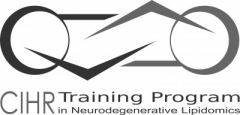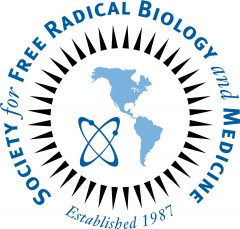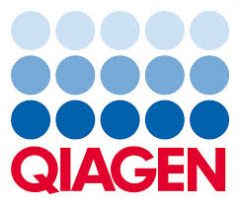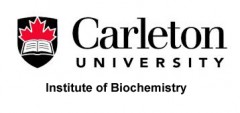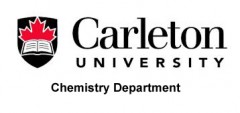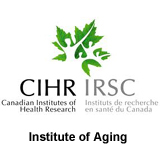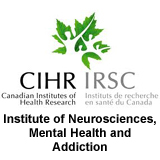The following organizations and companies have generously provided support for the 8th Meeting of the Canadian Oxidative Stress Consortium and are thanked for their valuable contributions and their sponsorship.
The Faculty of Science at Carleton University
The Faculty of Science at Carleton University was created in 1963 and is an integral part of a university that prides itself in being a leader in discovery and innovation. Students are taught by some of the leading scientific researchers in their disciplines (including 10 named research chairs) and by many award-winning teachers. Being located in the nation’s capital is particularly advantageous, as the Faculty enjoys numerous collaborative research and learning relationships with federal government research laboratories, museums, libraries, and high-technology industries in the Ottawa region.
Visit them at science.carleton.ca.
University of Ottawa, Vice President of Research
Although the University of Ottawa celebrated its 150th anniversary in 1998, the Faculty of Pure and Applied Science was only established in 1953. In subsequent years, the name was changed from Faculty of Science and Engineering to the Faculty of Science in 1986. Today the Faculty consists of more than 140 professors and 99 full-time support staff, and offers undergraduate and graduate programs to more than 2 900 students in five departments: Biology, Chemistry, Earth Sciences, Mathematics and Statistics, and Physics. It also oversees the undergraduate program in Biochemistry. Over the years, the Faculty of Science has become a true centre of excellence, earning recognition across Canada and abroad for its prowess in the classrooms and the laboratories. Researchers within the Faculty are pursuing some of the most significant and relevant scientific matters of our day including molecular biology, genetics, biopharmaceutical sciences, environmental genomics, catalysis, nanotechnology, applied modern mathematics and statistics.
Visit them at www.research.uottawa.ca/office.html.
CIHR Training Program In Neurodegenerative Lipidomics
The CIHR Training Program in Neurodegenerative Lipidomics (CTPNL) is a trans-institutional program and collaborative initiative between an interdisciplinary team of researchers at the University of Ottawa, Carleton University, University of Toronto, Sunnybrook Health Sciences Centre, and Ottawa Hospital Research Institute (OHRI). The program applies a targeted systems approach to integrative research that promotes and facilitates cross-disciplinary training and knowledge exchange in order to stimulate new insights to advance critical research in neurodegenerative lipidomics. The Neurodegenerative Lipidomics training program promotes a research and academic curriculum designed to produce experts and leaders in discrete fields yet able to understand, communicate, and collaborate with specialists from different disciplines. What makes this program unique is that these experts work together in interdisciplinary teams as part of their training – applying a systems biology approach targeting the complex problem of neuronal vulnerability in neurodegenerative disease. The program focuses on training highly qualified students and early-career professionals to apply lipidomic technologies and strategies to identify and reverse pathogenic changes in lipid metabolism that render neurons vulnerable to Alzheimer Disease (AD), Parkinson’s Disease (PD), and stroke. The program supports its training curriculum through an extended mentorship network of Principal Investigators (PI) and peer-mentors, as well as through award funding. The program consists of 18 PIs and, as of January 2014, 112 funded students and fellows in the fields of neuroscience, biology, architecture, engineering, medicine, psychology, analytical chemistry, genetics, molecular biology, engineering, and bioinformatics. The CTPNL has generously provided the CTPNL Travel awards for this meeting’s Graduate Students and Postdoctoral Fellows. We thank the CTPNL for their valuable support.
Visit them at www.med.uottawa.ca/lipidomics/index.html.
The Society of Free Radical Biology and Medicine
The Society For Free Radical Biology And Medicine (formerly The Oxygen Society) was established in 1987 in response to a growing recognition of the “dark side” of oxygen as a major issue for the life sciences. The “Oxygen Paradox” tells us that oxygen is both necessary for aerobic life and toxic to all life forms. Free radicals and reactive oxygen and nitrogen species now touch every biological and medical discipline. Efforts to counteract the damage caused by these species are gaining acceptance as a basis for novel therapeutic approaches, and the field of preventive medicine is experiencing an upsurge of interest in medically useful antioxidants and free radical scavengers.The SFRBM has provided support for our Keynote Speaker, Dr. Rafael Radi. We thank the SFRBM for their generous sponsorship from their Outreach Program.
Visit them at www.sfrbm.org.
ESBE/Ruskinn

ESBE Scientific is one of the largest Canadian owned distributors of laboratory equipment and supplies with local representation from coast to coast. ESBE Scientific has been serving the biotechnology, clinical and research laboratories across Canada for close to half a century by supplying quality products and services. Products offered include new technology ultra-low freezers, centrifuges, incubators, biosafety cabinets, fume hoods, liquid handling tools, balances, cell counters, microplate equipment, laboratory plasticware as well as general laboratory equipment.
Visit them at www.esbe.com/index.php.
Bio-Rad
Bio-Rad Laboratories, Inc. (NYSE: BIO and BIOb) designs, manufactures, and distributes a broad range of innovative tools and services to the life science research and clinical diagnostics markets. Founded in 1952, Bio-Rad has a global team of more than 7,750 employees and serves more than 100,000 research and industry customers worldwide through the company’s global network of operations. Throughout its existence, Bio-Rad has built strong customer relationships that advance scientific research and development efforts and support the introduction of new technology used in the growing fields of genomics, proteomics, drug discovery, food safety, medical diagnostics, and more.
Visit them at www.bio-rad.com.
QIAGEN
As the innovative market and technology leader, QIAGEN creates sample and assay technologies that enable access to content from any biological sample.
QIAGEN’s mission is to enable their customers to achieve outstanding success and breakthroughs in life sciences, applied testing, pharma, and molecular diagnostics. They thereby make improvements in life possible.
QIAGEN’s commitment to the markets, customers, and patients they serve drives their innovation and leadership in all areas where their sample and assay technologies are required.
The exceptional talent, skill, and passion of QIAGEN’s employees are key to their excellence, success and value.
Visit them at www.qiagen.com.
Seahorse Bioscience
Seahorse Bioscience metabolic analyzers and XF stress test kits are the industry standard for measuring cell metabolism, in real-time, in a microplate. XF Extracellular Flux Analyzers simultaneously measure the two major energy pathways of the cell – mitochondrial respiration and glycolysis – providing a full bioenergetic profile. Established in 2001, Seahorse Bioscience is a privately owned company, with headquarters in Billerica, Massachusetts, US, and regional offices in Copenhagen, Denmark and Shanghai, China.
Visit them at www.seahorsebio.com.
Cedarlane
With beginnings in a small garage in Canada, Cedarlane has grown within the life science industry to become a multi-national corporation with over 100 employees in Canada and the United States. The two main locations are well-established in Burlington, Ontario, Canada (close to Toronto airport) and coincidently, in Burlington, North Carolina, USA (close to Raleigh and Greensboro airports).
CEDARLANE Corporation and its many divisions are privately held entities, all of which are owned and operated by the same two shareholders who have remained unchanged for the past 27 years. The corporation has attained 400% revenue growth over the past 10 years, now representing a product portfolio of over two million products from over one thousand global companies. As an ISO 9001 and ISO 13485 establishment, Cedarlane has grown to specialize in a number of key areas including: global distribution, reagent manufacturing, custom lab services, lab research, freight consolidation/aggregation, product licensing, permits, cross border issues, and purchasing. Service and delivery are considered unparalleled within the industry.
The company offers a myriad of biological’s and biochemical’s to Life Science researchers and clinicians providing products from virtually all of the World’s most renowned international manufacturers. Delivery is timely and all products are stored, received, and shipped at appropriate required temperatures. Employees work closely with both customers and suppliers offering a personalized and comprehensive experience to reflect the core value that customers are of the utmost importance. By providing a gateway to over two million global reagents customers have the advantage of freight consolidation and the convenience and cost savings inherent within.
Manufactured products include monoclonal and polyclonal antibodies, cell separation media, complement for tissue typing, and highly characterized neuronal cell lines.
As a corporation Cedarlane attends and exhibits at over 100 international trade and vendor shows annually, specially focused to a variety of disciplines. Cedarlane has preferred vendor status with a number of North American institutions due to our value-added model and strong sales and marketing capabilities.
Visit them at www.cedarlanelabs.com.
LUOXIS
Luoxis is an in-vitro diagnostics company focused on the development and global commercialization of RedoxSYS™. This novel, diagnostic platform is comprised of a first-in-class, point-of-care device and disposable, testing strips that together measure the presence of oxidative stress and antioxidant reserves.
RedoxSYS™ is the only in-vitro diagnostic platform that measures human Oxidation-Reduction Potential (ORP), an important, complete measure of oxidative stress that is implicated in both critical and chronic illnesses. As demonstrated over decades in multiple, peer-reviewed publications. ORP is an important marker in the assessment of patient morbidity across a wide range of diseases and conditions. There are numerous clinical applications for this oxidative stress marker for which there is no currently available diagnostic test.
Visit them at luoxis.com.
The Department of Biology at Carleton University
The Department of Biology is committed to providing high quality education to our students, to advancing biological knowledge through research, and to providing scientific expertise locally, nationally and internationally.
It is dedicated to the proposition that biology is a fundamental discipline of human experience and discovery. Our faculty, staff and students engage in research and teaching at the forefront of modern biology to increase our understanding of biological organization and function.
The Biology Department is housed in five buildings: Herzberg Laboratories, H.H. J. Nesbitt Biology Building, Steacie Building, Tory Building, and the Carleton Technology and Training Centre (CTTC). The Biology office is in 209 Nesbitt Biology Building.
Visit them at www.carleton.ca/biology.
The Institute of Biochemistry at Carleton University
The Institute of Biochemistry at Carleton was formed in the 1970’s as a collaborative teaching and research unit. With a total program enrolment of approximately 200 students, the Institute has grown to include 20 faculty members from the Departments of Biology and Chemistry four administrative staff members and two dedicated lab coordinators. What unites us all is a keen interest in biochemistry and passion for teaching about the marvels of realm of science. The scientific discipline of biochemistry is inherently multidisciplinary and founded on collaborative interactions. Consequently, biochemistry graduates are sought after by employers because they are well trained in experimental techniques and their breadth of knowledge spans the continuum of inorganic and organic chemistry, enzymology, molecular and cellular biology and whole animal physiology. It is also no surprise that biochemistry graduates are among the best prepared applicants who write the entrance examinations of professional programs such as the MCATs. Modern medicine is founded on the discoveries made by biochemists and biochemists continue to work at the forefront of biomedical research.
Visit them at www.carleton.ca/biochem.
The Chemistry Department at Carleton University
The Department of Chemistry at Carleton University is a hotbed of diverse academic programs, innovative research and enthusiastic faculty and staff. We offer undergraduate programs where students can earn a Bachelor of Science degree in either honours or general studies. The department of Chemistry also offers graduate degree programs in both MSc and PhD studies. Commencing in fall 2008, Chemistry will be offering an exciting new undergraduate degree program in Food Science. We have faculty members specializing in various disciplines of chemistry such as Nanotechnology, Environmental Chemistry, Enzyme Chemistry, and Organic and Polymer Chemistry, Inorganic Bioinorganic, Nucleic acids, Analytical Chemistry, Inorganic Materials, Atomic Layer Disposition, Biophysical Chemistry, Biosensors, Synthetic Organic Chemistry, Organic Pollutants, Ecological Chemistry and Ecotoxicology. During the summer of 2008, the Steacie Superlab was built. The lab was conceived of, designed and built in less than one year. demolition of the old labs began on April 15, 2008 and the Superlab was completed September 2, 2008. The lab cost approxiately $5 million dollars and was funded by the Ontario Government.
Visit them at www.carleton.ca/chemistry.
SARSTEDT
The SARSTEDT Group develops, manufactures and sells equipment and consumables in the field of medicine and science. Ever since it was set up in 1961 the company has continued to grow to the point where it now employs a workforce of 2,500.Their main products include:a) Consumables and analytical equipment for medical diagnostics and consumables for use in medical patient care.b) Consumables, laboratory aids and laboratory equipment for industrial and research laboratories and also for environmental analytical work.
Visit them at www.sarstedt.com.
Fisher Scientific
Fisher Scientific was incorporated in 1902 in Pittsburgh, PA, by Chester Fisher, who’s vision was a one-stop shop for the Scientific market. In 1926, the first Canadian office was opened in Montreal, QC, and since the 1980’s the corporate office is located in Ottawa, ON. Then in 2006, Thermo Electron and Fisher Scientific merged to become Thermo Fisher Scientific, allowing them to better serve their customers and become a world leader in servicing Science. Along this journey, Thermo Fisher Scientific has been, and will remain, a constant partner; providing solutions that help enable success. Thermo Fisher Scientific’s partnerships have remained strong because of Fisher’s culture of service. Each dedicated Fisher Scientific employee is committed to exceeding expectations. Researchers are poised to make unbelievable advancements in Scientific Discovery. Thermo Fisher Scientific looks forward to continuing along this remarkable journey, serving Science well into the 21st Century!
Visit them at www.fishersci.ca.
Integrated DNA Technologies
Integrated DNA Technologies (IDT) is a leader in manufacturing and developing products for the research and diagnostics life science market. IDT serves the areas of academic research, biotechnology, and pharmaceutical development. IDT was founded by Dr Joseph Walder in 1987. Since then, its development has been guided by an uncompromising approach to quality, a belief in the value of good service, and a determination to minimize consumer costs.
Serving over 80,000 life sciences researchers, IDT is widely recognized as the industry leader in custom oligonucleotides due to its capabilities in analytical sophistication, design engineering, customer support and reagent and input control.
IDT has over 700 employees serving our worldwide customer base from headquarters in Coralville, Iowa, and facilities in San Diego, California; Leuven, Belgium; and Singapore.
Visit them at www.idtdna.com.
ROCHE
Roche plays a pioneering role in healthcare. As an innovator of products and services for the early detection, prevention, diagnosis and treatment of diseases, Roche contributes on a broad range of fronts to improving people’s health and quality of life. Roche is providing the first products that are tailored to the needs of specific patient groups. Roche’s mission, today and tomorrow, is to create added value in healthcare by focusing on our expertise in diagnostics and pharmaceuticals.
Visit them at www.roche.com.
Canadian Institutes of Health Research: Institute of Aging
CIHR established the Institute of Aging (IA) “to support research, to promote healthy aging and to address causes, prevention, screening, diagnosis, treatment, support systems, and palliation for a wide range of conditions associated with aging.” Unlike many other CIHR Institutes, which are focused on particular diseases, the Institute of Aging’s mandate is the aging person in an aging society, and the effects of different diseases and conditions on aging. Its goal is to improve the quality of life and health of older Canadians by understanding and addressing or preventing the consequences of a wide range of factors associated with aging.
Visit them at www.cihr-irsc.gc.ca/e/8671.html.
Canadian Institutes of Health Research: Institute of Neuroscience, Mental Health and Addiction
The Institute of Neurosciences, Mental Health and Addiction (INMHA) supports research to enhance mental health, neurological health, vision, hearing, and cognitive functioning and to reduce the burden of related disorders through prevention strategies, screening, diagnosis, treatment, support systems, and palliation.
Visit them at www.cihr-irsc.gc.ca/e/8602.html.


